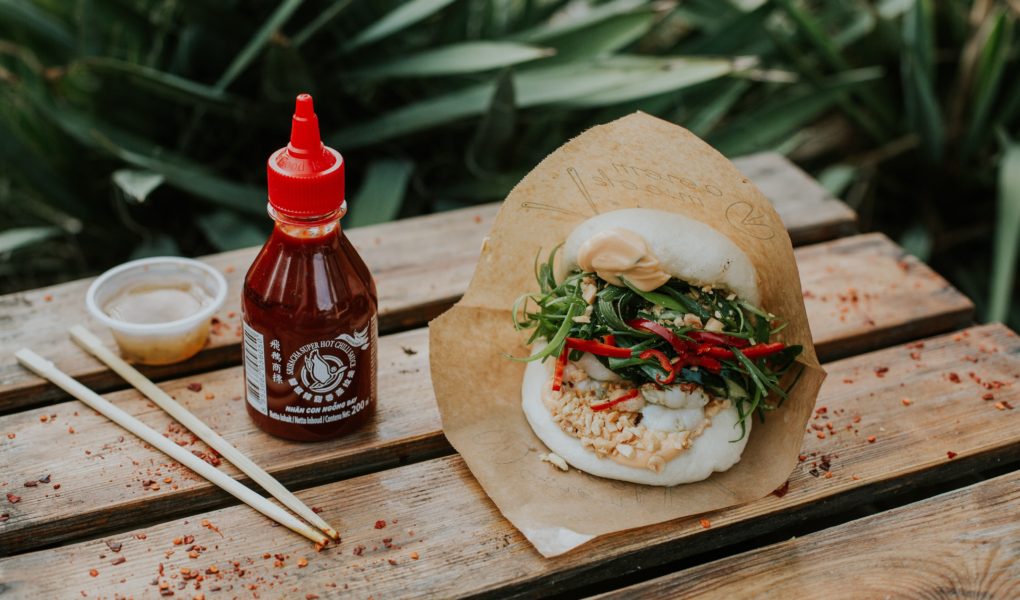Did you know that it is incredibly easy to cook vegan Asian food?
One of the best things about Asian cuisines like Chinese, Japanese, and Thai is that there are tons of vegan-friendly recipes. All you need are a few Asian pantry staples and you can whip up delicious recipes from any Asian country in minutes. You can even tweak or adjust most traditional recipes to create flavorful, vegan dishes.
Stock your pantry with these essential Asian pantry ingredients and you can make your favorite Asian vegan recipes whenever you want.
Soy Sauce
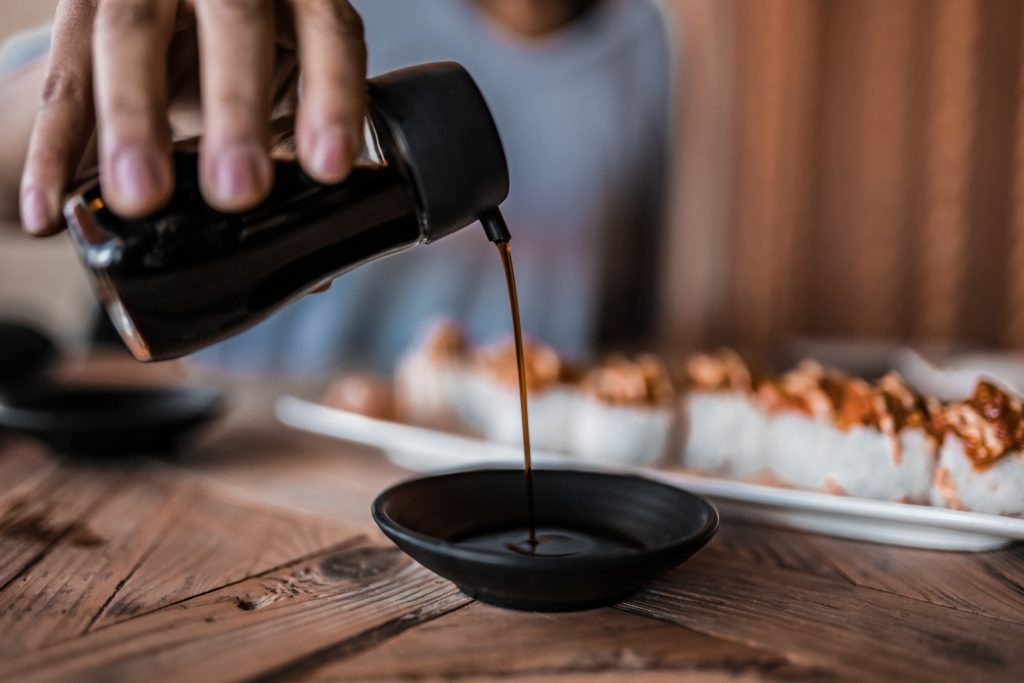

Soy sauce, an indispensable part of Asian cooking, is a staple ingredient in most Chinese and Japanese dishes. This liquid condiment is made from fermented soybeans and wheat. It is a good source of vitamin B3, iron, phosphorus, and manganese. However, it is also high in sodium.
In the traditional manufacturing process, soaked soybeans and wheat are mixed in the presence of a culturing mold. After a few days, water and salt are added to the mixture. It is then aged in a fermenting tank for several months. Finally, the liquid extracted from the resulting mash is pasteurized and bottled.
Soy sauce was originally developed in China and later introduced to Japan and other countries. Over time, different ingredients and changes in the manufacturing process were introduced. This led to the development of new varieties with distinct colors and flavors. For instance, Japanese soy sauce is brewed with roasted wheat. Meanwhile, Chinese soy sauce uses wheat flour which delivers a different flavor.
Light soy sauce is a common variety that is extensively used in many recipes. It is also called regular soy sauce and is thinner and lighter than traditional soy sauce. It is an all-purpose seasoning. Small quantities are enough to season most dishes without coloring them.
Due to popular demand, manufacturers have also come up with low-sodium varieties and gluten-free soy sauce.
Let us now look at the other varieties of soy sauce available in the market.
Types of Soy Sauce:
Dark Soy sauce: This is a thick and dark version of soy sauce. It has an intense, strong flavor but is less salty. It is commonly used in recipes that involve slow cooking. This soy sauce imparts a distinct dark color to rice and noodle dishes.
Dark soy sauce is also available in mushroom flavor, which has a higher level of glutamate. You will also find a super-dark variety called double black soy sauce. The molasses in it produces a rich, dark brown color and distinct taste.
Light Soy Sauce (Chinese): Light soy sauce is very commonly used in Chinese cooking. It is thin, reddish-brown, and salty. It is used as an all-purpose seasoning and as a dipping sauce.
Light Soy Sauce (Japanese): Japanese light soy sauce is sweeter and saltier than its Chinese counterpart. The flavor is more intense. It is useful as an all-purpose flavoring agent and doesn’t color food. Japanese soy sauce is generally thinner and lighter than Chinese soy.
Tamari: Tamari is a unique soy sauce that has only soy and no wheat. It has a complex flavor. The absence of wheat makes it suitable for gluten-free cooking.
Seasoned soy sauce: As the name suggests, seasoned soy sauce is light soy sauce with seasonings added to it. MSG adds extra punch to the flavor, and it is commonly used as a dipping sauce.
Kikkoman Soy Sauce: This is an easily available variety of soy sauce with both light and dark variants. Kikkoman soy sauce has a mellow flavor and an intense, reddish-brown color. This all-purpose sauce is used in dips, stir-fries, and traditional Asian recipes.
Sesame Oil

Sesame oil, obtained from cold-pressed raw sesame seeds, is an essential Asian cooking ingredient. It is a rich source of antioxidants like Sesamol and Sesaminol.
Sesame oil has 82% unsaturated fatty acids. Continuous use of this oil reduces the risk of developing cardiac health conditions. Studies also suggest that sesame oil can help to control blood sugar levels and diabetes. Learn about all the benefits of sesame oil here.
Toasted sesame oil is a popular variant used in Asian and Chinese cooking. It has a distinct brown color and is strong, flavorful, and aromatic. Always use it in moderation as it can easily overpower a dish. Sesame oil is usually added during the final cooking stage since it has a high smoking point. This oil can also be included in marinades, dips, and sauces.
Rice Vinegar

Rice vinegar is used in various Asian dishes like pickled vegetables, salads, and slaws. It is made from fermented rice and has a delicate, sweet flavor. Rice vinegar contains phenols with natural cancer-fighting properties.
There are three common varieties of rice vinegar that are used in Asian cooking.
Black rice vinegar: We can trace the origins of this aromatic rice vinegar to Zhenjiang in China. It is almost black and is sweet and sour. Due to the intense flavor, it is commonly used as a dip.
Red Rice vinegar: This mild rice vinegar that has lesser acidity than typical supermarket white vinegar. It is prepared from red rice yeast, sorghum, and barley. Red rice vinegar is used for cooking and helps to crisp up stir-fry vegetables.
White rice vinegar: White rice vinegar tastes almost like apple cider vinegar. However, it is milder. It is almost colorless and has a delicate, sweet taste.
Chili Garlic sauce and Sriracha
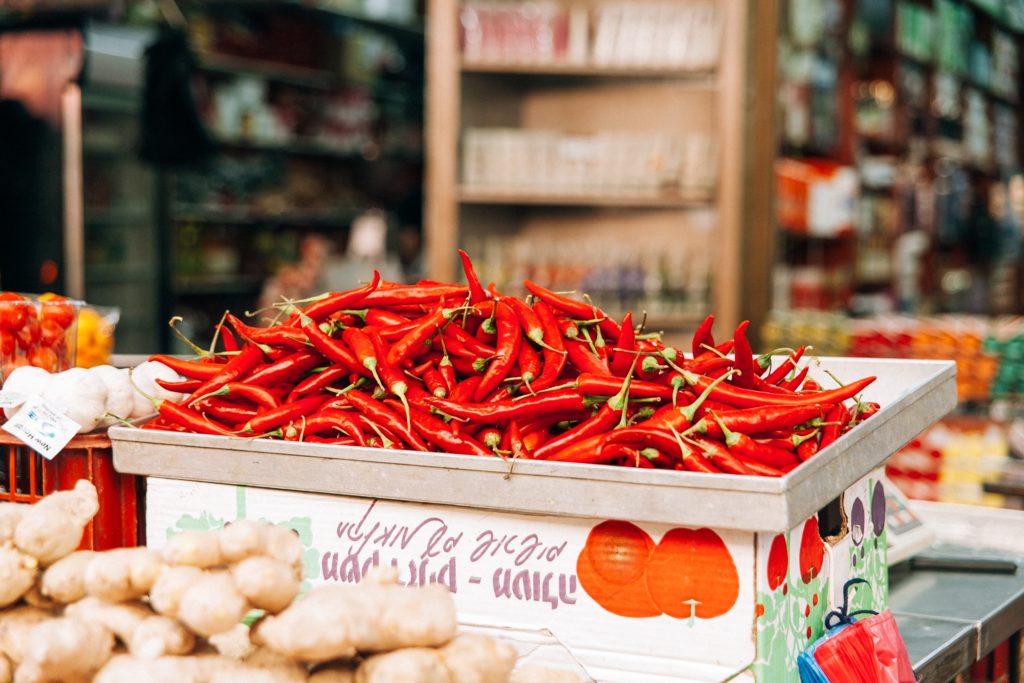
If you are fond of ingredients that multi-task, you should add chili garlic sauce and Sriracha to your pantry. These sauces can be used to create numerous Asian dishes.
Chili garlic sauce is made with chili pepper paste, garlic, rice vinegar, and salt. It is full of flavor, spicy and aromatic. It can also be used as a dip or as a side for noodles and rice dishes.
Sriracha is a bright red sauce. It has fresh red jalapeno chili peppers, sugar, salt, garlic, and vinegar. The original Sriracha sauce was produced by Huy Fong Foods. It didn’t have artificial colors or preservatives but was hot and spicy.
Both chili garlic sauce and Sriracha sauce store well in the refrigerator and are versatile cooking ingredients.

Wasabi

Wasabi is an Asian condiment made from Japanese horseradish, which goes by the same name. This plant paste is made using horseradish rhizomes.
Wasabi is green in color and pungent. It has a sharp, burning taste and should be consumed in moderation. Excessive intake can blow open your nasal passages. Fresh wasabi loses its fragrance very quickly. However, the ready-to-use paste keeps well in the refrigerator and imparts the distinct aromatic flavors of the original herb. Wasabi is usually served with pickled ginger beside sushi and other Japanese dishes. It is also be used in sauces and for cooking.
Miso
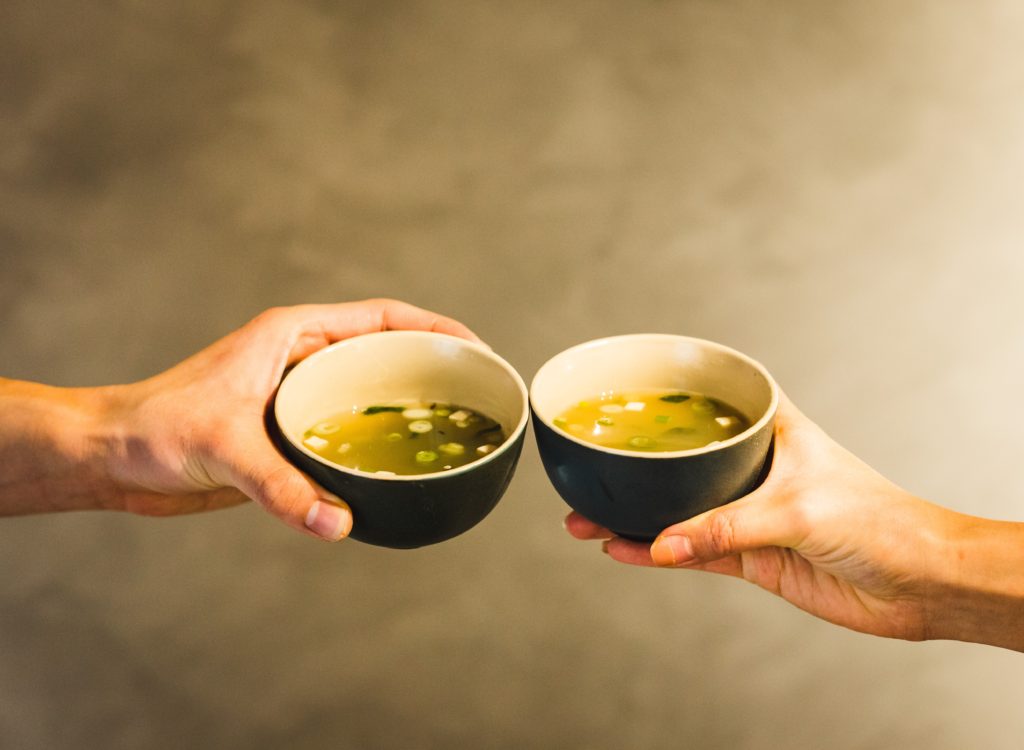
Miso is a Japanese spice paste made from fermented soybean, grains like rice or barley, salt and a fermentation starter called Koji. The constituents are mixed and fermented in cedarwood kegs for several months to yield the final product.
Miso has a rich, salty flavor. The texture is like peanut butter. Miso can be chunky or smooth. The color depends on the ratio of soybeans and rice in the paste as well as the length of the fermentation period. Miso can be light, dark or red.
Lighter colors contain less soybean content and more grains. It has a shorter fermentation period and hence is sweet. Dark miso is generally tangy and saltier. It will have undergone fermentation for much longer.
Miso can be used to make soups, salad dressings, and batters. Miso imparts rich, complex umami flavors to a dish when it is added at the end of the cooking process. It can also be used as a dip or side.

Nori

Nori is edible seaweed and it forms an integral part of Japanese cuisine. It is a rich source of calcium and minerals like copper, iron, manganese, phosphorus, selenium, and zinc.
Nori is available in various forms. You can buy nori sheets, shredded Nori (Kizami Nori), or dried nori powder (Aonori).
Nori tastes a little oceanic (but not fishy at all) and it has an incredibly long shelf-life.
Nori is prepared by shredding seaweed and pressing it into thin sheets. They are then sealed in airtight containers or bags to retain crispness. Nori sheets have a paper-like texture.
You can eat seaweed as a snack ON THE GO! It’s quick and easy with only 25 calories per single pack! Roasted to crispy perfection, and seasoned with different savory flavors (my fav is Teriyaki).

In Japanese cuisine, Nori is commonly used to wrap sushi. You can eat it raw or mix it with sesame seeds and other spices to make interesting seasoning combinations. Thinly sliced nori is often used as a seasoning for rice dishes or added to salads and side-dishes for extra bite.
Sake
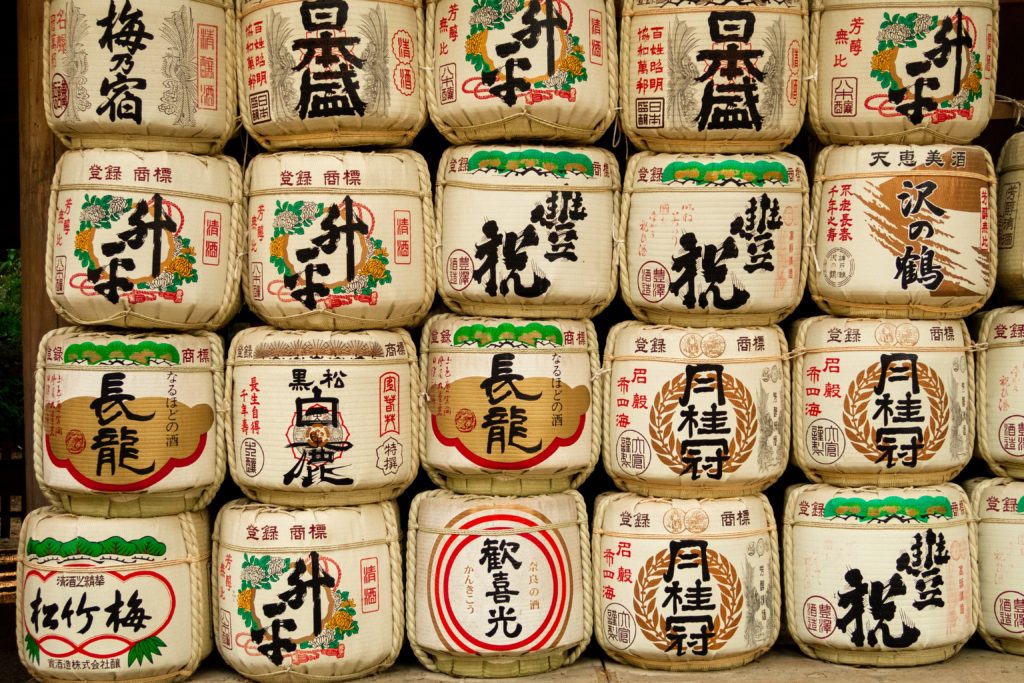
Sake, also known as rice wine, is produced by brewing rice and water in the presence of a fermenting agent like yeast. The rice in it makes it naturally sweet. It is a common ingredient in Japanese cooking.
Sake is used to flavor a variety of dishes like soups, stews, and sauces. Depending on the brew, the taste can vary from dry to sweet. The quality of sake depends on the rice and water used in the brewing.
Sake can be consumed as a drink. However, cooking sake is specially made for cooking purposes and contains salt. Cooking sake has a shelf life of two to three months when it is stored in a cool, dark place.
The strong characteristic flavors of sake make it a popular flavoring agent. When paired with other seasonings, the flavors of sake intensify. To learn more about this authentic Asian pantry ingredient, visit this post.
Coconut Milk
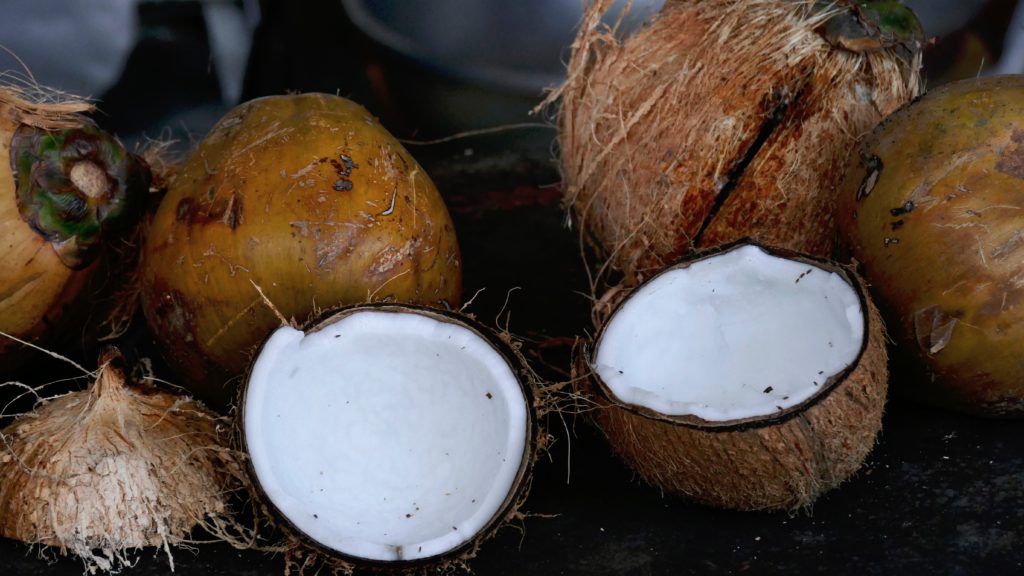
Creamy coconut milk forms the base of many delicious Asian cuisines like Thai, Chinese and Indian. Coconut milk is extracted from the grated coconut by blending it with water and squeezing out the clear white liquid. It is used in both sweet and savory dishes.
Coconut milk is rich in saturated fats and healthy vitamins and minerals like iron and manganese. It has a luxurious, creamy texture. It is an excellent substitute for milk and can be used in place of dairy products to make common recipes vegan friendly.
This Asian cooking ingredient is easily available in most grocery stores. It is sold in cans or cartons. Once opened, coconut milk should be refrigerated and used within three days. You can also prepare it at home by pureeing coconut pulp with water and squeezing out the liquid.
Coconut milk imparts a delicious flavor and smooth, creamy texture to rice dishes, curries, and soups. It is usually added at the end of the cooking process to prevent curdling. It imparts a flavorful aroma and thick, silky texture to a dish. Coconut milk can also be used in desserts and puddings. For more information about coconut milk, visit this article.

Barley

Barley is a natural grain that is extensively used in Asian cooking. It is suitable for vegans and has a nutty flavor and chewy texture. This makes it the perfect addition to salads and slaws.
Barley contains good amounts of molybdenum, copper, manganese, selenium, and vitamin B. It also has lignans, which are antioxidants that reduce cancer risk and heart disease. The rich fiber content of barley makes it beneficial for intestinal health. Learn more about the health benefits of barley in this article.
Barley can be used instead of rice, pasta, or couscous. It can also be used as a stuffing or added to breakfast cereals and batter. You can even make desserts like pudding with barley.
The Bottom Line…
Asian cuisines like Japanese, Chinese, and Thai are full of delicious vegan options. With the right pantry ingredients, you can easily achieve authentic flavors and experiment with various Asian recipes.
This list discusses the basic ingredients that will allow you to try a variety of recipes. Stock your pantry with these ingredients to make home-made, 100% purely Asian dishes and you will never want to order take-out again!

Did you enjoy reading this article? Please tag me on Instagram @cookingmypoundsoff. I would LOVE to hear from you!!! Truly yours, Elena!
The content of this article should not be considered a substitute for professional medical expertise or treatment. This website is not intended to be a substitute for the advice of a physician, certified dietitian, or other licensed professional. Always consult with your primary care provider before starting a new diet or introducing new foods.

